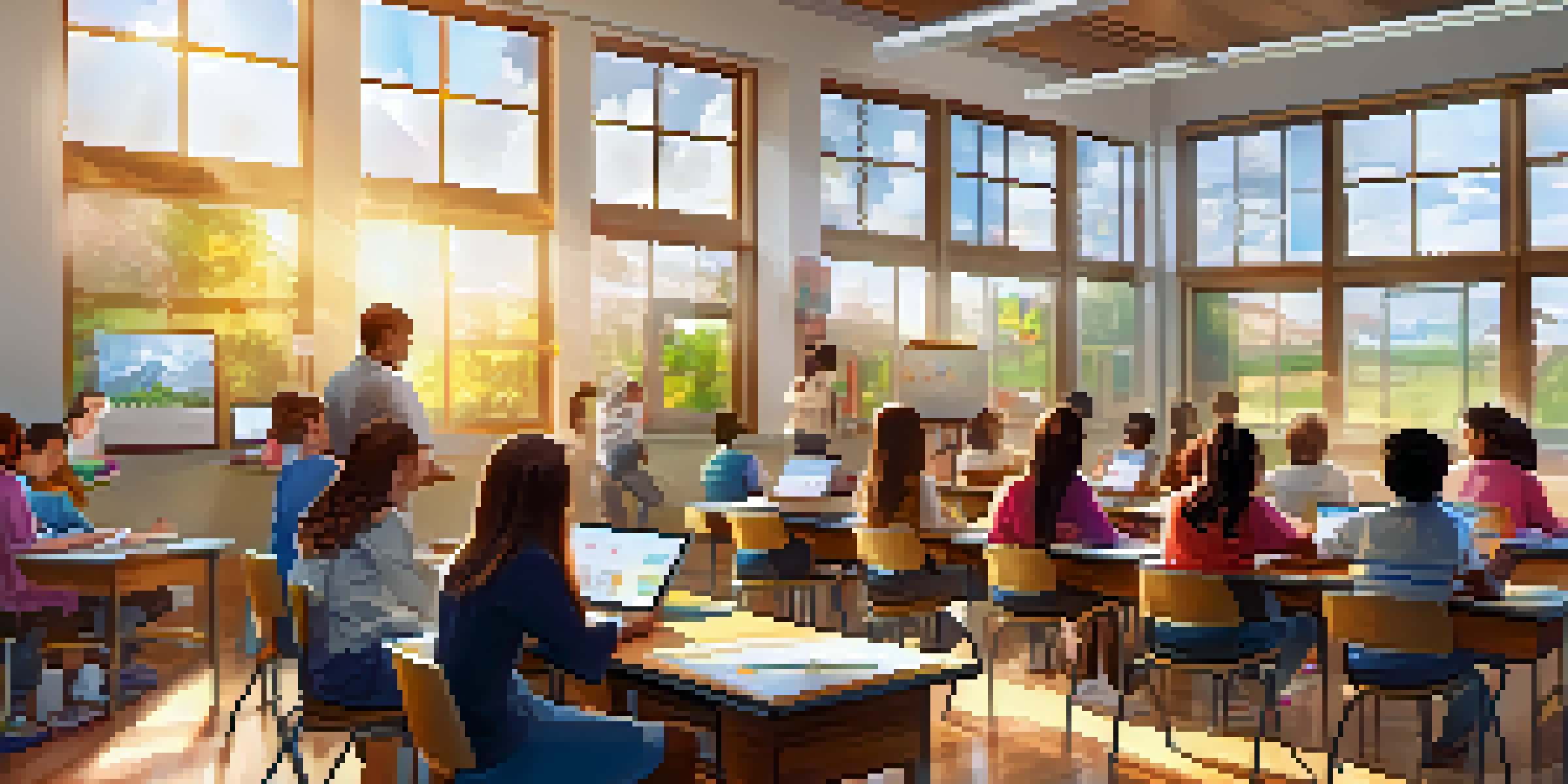Real-Time Learning: Using Technology to Enhance Experience

Understanding Real-Time Learning in Education
Real-time learning is a dynamic approach where information is processed and applied immediately. Imagine a classroom where students can access resources instantly, allowing them to dive deeper into subjects as they arise. This immediacy transforms traditional learning, enabling students to grasp concepts more efficiently and effectively.
The greatest danger in times of turbulence is not the turbulence; it is to act with yesterday's logic.
Unlike conventional methods where students wait for feedback, real-time learning leverages technology to provide instant responses. For instance, interactive quizzes can give students immediate results, helping them identify areas that need improvement right away. This quick feedback loop promotes better understanding and retention of knowledge.
Moreover, real-time learning fosters a collaborative environment. Students can work together on projects using tools like Google Docs or Slack, sharing insights and knowledge in real time. This not only enhances their learning experience but also prepares them for a teamwork-oriented workplace.
The Role of Technology in Real-Time Learning
Technology plays a crucial role in facilitating real-time learning experiences. With the advent of mobile devices, students can access educational content anytime and anywhere, turning any location into a learning environment. This flexibility allows for learning that fits individual schedules and preferences.

Additionally, tools like virtual classrooms and video conferencing platforms have made it easier for educators to engage with students in real time. Think of it as having a classroom that transcends physical boundaries, enabling educators to reach learners across the globe. This enhances diversity and enriches the learning experience by exposing students to various perspectives.
Real-Time Learning Enhances Engagement
Real-time learning utilizes interactive technology to create dynamic and immersive educational experiences that actively involve students.
Furthermore, educational apps and software are designed to promote interactive learning. These tools often include gamification elements, making learning fun and engaging. By incorporating technology, students are not just passive recipients of information; they actively participate in their education.
Benefits of Real-Time Feedback in Learning
One of the standout features of real-time learning is the ability to receive immediate feedback. This is especially beneficial in subjects like math or science, where understanding concepts builds upon previous knowledge. When students get instant feedback, they can address misconceptions before they become ingrained.
Education is not the filling of a pail, but the lighting of a fire.
For example, consider a student struggling with algebra. With real-time feedback from an online tutoring platform, they can quickly grasp a concept and correct errors as they work through problems. This not only boosts confidence but also enhances mastery of the subject matter.
Moreover, immediate feedback encourages a growth mindset. Students learn that mistakes are valuable learning opportunities and are less likely to fear failure. This mindset is essential for lifelong learning, as it fosters resilience and adaptability in an ever-changing world.
Engaging Learners Through Interactive Technology
Interactive technology is a cornerstone of real-time learning, making lessons more engaging. Tools like interactive whiteboards and educational software allow teachers to present information dynamically, capturing students' attention. Imagine a history lesson where students can explore ancient cultures through virtual reality.
These immersive experiences create a deeper emotional connection to the material. Students are more likely to remember what they've learned when they can visualize and interact with it. This hands-on approach transforms passive learning into active exploration.
Immediate Feedback Boosts Understanding
Receiving instant feedback allows learners to quickly address misconceptions and fosters a growth mindset essential for lifelong learning.
Additionally, interactive technology encourages student participation. Features like polls, quizzes, and discussion boards foster a sense of community and collaboration. When students feel involved, they are more invested in their learning journey.
Real-Time Learning in the Workplace
Real-time learning isn't just limited to classrooms; it’s equally vital in the workplace. As industries evolve, employees must continuously update their skills. Real-time learning allows organizations to provide training that is timely and relevant, helping employees stay ahead of the curve.
For example, many companies use online platforms for employee training, where workers can complete modules at their own pace but also receive instant feedback. This immediacy enhances the training experience, ensuring that employees can apply their new knowledge right away.
Moreover, real-time learning promotes a culture of continuous improvement. When employees can learn and adapt on the fly, organizations can respond more swiftly to changes in the market. This agility is a competitive advantage in today’s fast-paced business environment.
Challenges of Implementing Real-Time Learning
While real-time learning offers numerous benefits, it also comes with challenges. One significant hurdle is ensuring all students or employees have equal access to technology. Disparities in access can lead to gaps in learning opportunities, which can be detrimental to overall development.
Additionally, not everyone is comfortable with technology. Some learners may struggle to adapt to new tools or platforms, leading to frustration. It’s essential to provide adequate training and support to help individuals navigate these technologies effectively.
Technology's Role in Flexible Learning
Advancements in technology enable real-time learning to occur anytime and anywhere, accommodating individual learning preferences and schedules.
Lastly, there's the challenge of maintaining engagement. With so many distractions online, it can be difficult to keep learners focused. Creating compelling content and interactive experiences is crucial to overcoming this hurdle and ensuring that real-time learning remains productive.
The Future of Real-Time Learning
Looking ahead, the future of real-time learning appears promising. As technology continues to advance, we can expect even more innovative tools that enhance the learning experience. Imagine personalized learning experiences powered by artificial intelligence, adapting to each learner's unique needs.
Moreover, the integration of augmented reality (AR) and virtual reality (VR) could revolutionize how we learn. These technologies have the potential to create immersive environments that simulate real-world scenarios, making learning more engaging and effective.

Ultimately, the goal of real-time learning is to create a more flexible, inclusive, and effective educational environment. By harnessing the power of technology, we can empower learners to take control of their education and thrive in an increasingly complex world.